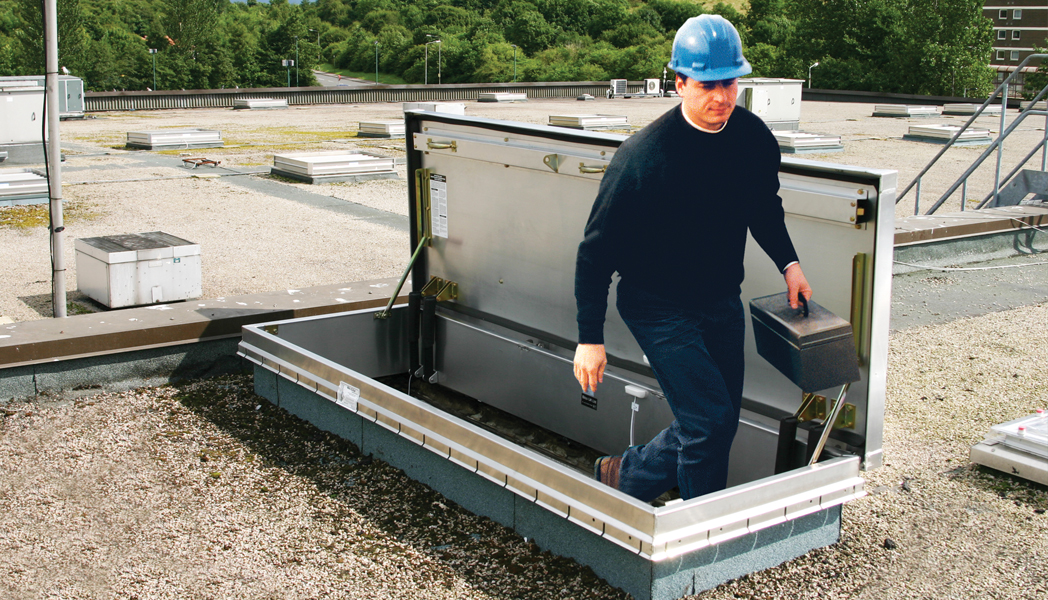Out of the many places you can maintain within your commercial building, the roof is one that you need to focus on most of the time. You will never know what kind of roofing issues will happen, especially if you leave it unattended for a very long time.
In most cases, roofing contractors and maintenance personnel will need to access your roof to do the repairs and maintenance. Hence, it would be best if you had roof hatches to prevent personnel from propping up a ladder at the side of the building. But before you contact contractors to install roof hatches on your building, you need to know about the common overlooked hazards of roof hatches.
1. Guardrails Around the Roof Hatch
You cannot install a roof hatch without installing the guardrails alongside it. The guardrails act as a fall protection device for when people go through the roof hatch. In some cases, commercial buildings have a sloped roof that can cause any person to slip and fall, causing massive body injuries.
OSHA requires guardrails for buildings that have roof hatches. Without anything to grab when entering the roof hatch, there’s a big chance people will lose their balance and fall to the side of the roof. If you still don’t have guardrails on your roof hatch, you need to install one as quickly as possible.
2. Railings with a Self-Closing Gate
Besides falling off the roof, a person can also fall into the roof hatch for several reasons. The most common is they weren’t too observant when walking around, so they tripped and dove right into the roof hatch opening. It can happen to you or anyone by chance, so building contractors prefer that you install railings that have a self-closing gate.
The railings are visible enough for people to notice and avoid accidentally falling into the roof hatch. The self-closing gate is a crucial component of the railing because it closes on its own once people step foot into the roof. It’s the most effective safety feature for people who forget to close the gate right after passing through the roof hatch and into the roof.
3. Install Roof Hatch 10-Feet Away from the Roof Edge
Another thing you need to find out about roof hatches is you need to install them 10 feet away from the roof edges. OSHA and other reliable safety organizations recommend that you install roof hatches at a safe distance from the roof edge, precisely 10 feet far. Many unfortunate accidents happened in the past because the roof hatch led to the side of the roof right away.
Unsuspecting people usually fall victim to the accident, so you must ensure that you prevent it by following the 10-feet rule. Even if the roof hatch is far away from the roof’s edge, you need to install guardrails for added protection. If you don’t plan on installing guardrails, safety organizations recommend that you need to place your roof hatch 15 feet away.
4. Know the Roof Hatch’s Use
Installing a roof hatch without knowing what you’ll use it for is useless. In some cases, commercial building owners randomly install large roof hatches, when in fact, they only need a smaller one since the rooftop isn’t too high.
You need to stay active and communicate effectively with your contractors to learn what type of roof hatch you need. There are various Cendrex roof hatches to choose from, so you have to weigh out your options and ensure you get the right one.
5. Incorrect Roof Hatch Features
A while ago, there are many roof hatch variants, and each one provides a specific feature. Your building might need fire-rated roof hatches because you have highly flammable products inside your building. If you don’t get the fire-rated roof hatch, you increase the chances of the fire from spreading.
You can also get smoke vent roof hatches that automatically open when it detects a fire through its fusible link. The smoke generated from the fire gets to escape easily since smoke always travels upwards faster than sideways.
Hopefully, the things mentioned above will give you more information about roof hatches and how you can effectively use them. Ensure you only get quality roof hatches from reliable suppliers if you want them to last for a long time.

Leave a Reply
You must be logged in to post a comment.